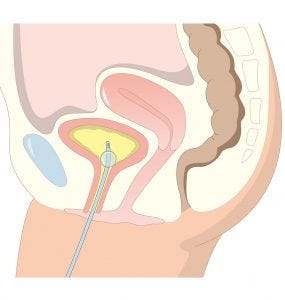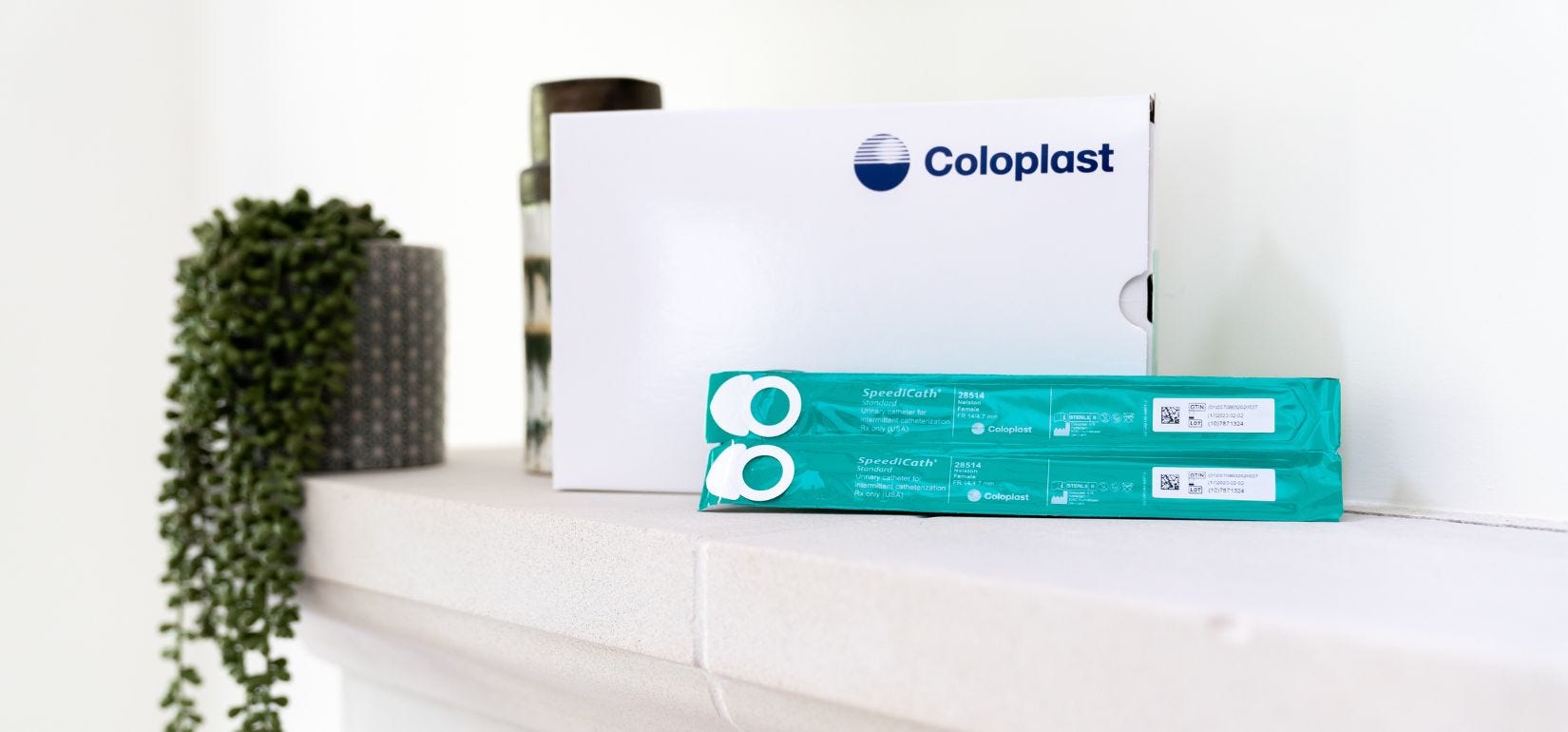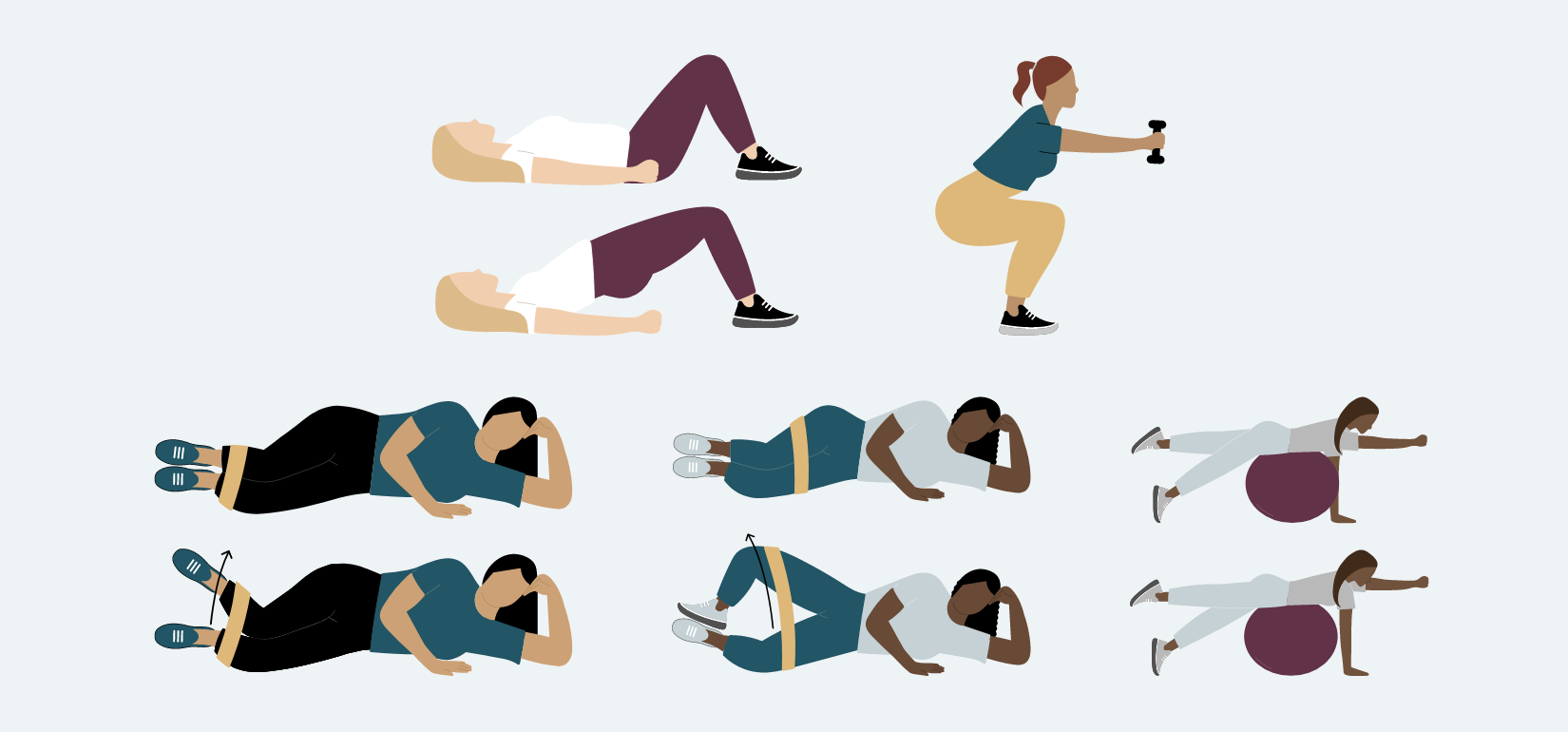If you’ve ever wondered, what is a catheter? Then you’re in the right place because we’re going to solve the mystery. Prepare to have all of your catheter questions answered from types, sizes, insertion tips, how to qualify through insurance, options for women, and much more! It’s time to go with the flow.
Basically, a catheter is a thin tube that is inserted into the body to perform a variety of functions for cardiovascular, urological, gastrointestinal, and ophthalmic purposes. Catheters are inserted into a body cavity, duct, or vessels to allow drainage, administer fluids or gases, access by surgical instruments, and more. They are often used to drain the bladder and can be quickly inserted and removed or left in the body for longer periods of time. A permcath refers to a catheter that’s permanently left in the body.
There are a variety of causes for catheterization from urinary incontinence or untrollable urine leakage, urinary retention or not being able to urinate on your own, prostate issues, having surgery or an accident that causes the need for catheterization, or other health issues such as nerve damage to the bladder or bladder obstruction.
The type of catheter you need depends on why and how long you need to use them.
Intermittent Catheter - An intermittent catheter or short-term catheter is self inserted a few times during the day to periodically empty the bladder. It’s a disposable catheter and should be discarded after use to reduce the risk of urinary tract infections (UTI). They eliminate the need to wear a catheter bag or drainage bag for a more active lifestyle.
They mimic the way the bladder naturally fills and empties but require a degree of certain hand motion. Also, self-intermittent catheterization may take a little practice to perform quickly.
There are a few different types of intermittent catheters to choose from based on your preferences such as a cloude tip catheters with curved ends to easily guide past tight spots or hydrophilic catheters with a smooth, lubricated coating.
Men and Women:
MEN:
WOMEN:
Men and Women Continued:
Note: If your catheter seems stuck, do not force it in. Relax and then try again later.
 Indwelling Catheter - An indwelling or Foley catheter are catheters that are left inside of the body for varying periods of time as “indwelling” means inside. They typically drain into a urinary bag that will need to be emptied periodically throughout the day.
Indwelling Catheter - An indwelling or Foley catheter are catheters that are left inside of the body for varying periods of time as “indwelling” means inside. They typically drain into a urinary bag that will need to be emptied periodically throughout the day.
Indwelling catheters are inserted by a healthcare professional through the urethra or a small hole in the abdomen.
Transurethral Catheterization: When an indwelling catheter is placed through the urethra. This is also known as urethral catheterization.
Suprapubic Catheterization: Insertion of an indwelling catheter through the anterior abdominal wall.
Indwelling catheters have a small balloon on the end that’s deflated when the catheter is removed. Short term use refers to needing it for 14 days or less. Long term use is longer than 30 days.
When it comes to urine bags you will have a smaller leg bag and a larger bag for overnight use or to collect urine during longer periods of time. The leg bag can be discretely attached to your upper thigh.
Contact your doctor if:
External Catheter - External catheters are catheters for men, sorry ladies. They are condom catheters, meaning they wrap around the penis like a catheter and are often preferred for their noninvasive design. Like indwelling catheters, the connect to a drainage bag to collect urine.
External catheters must be properly fitted to prevent leakage and skin irritation. Adhesive is used to keep the catheter in place during use. Options are made out of latex and silicone to provide comfort options.
External catheters need to be changed on a daily basis.
Catheters Through Insurance
Cut costs and never worry about running out of catheter supplies by qualifying for catheters through insurance! The process is easy!
Now we don’t just send you any type of catheter. We take the time to match you with the best options to suit your individual lifestyle and provide samples to help you discover which options are the most comfortable. Also, we will check in on a monthly basis to see if you need to make any changes to your supply!
Urinary Catheters
What Is A Catheter?
Basically, a catheter is a thin tube that is inserted into the body to perform a variety of functions for cardiovascular, urological, gastrointestinal, and ophthalmic purposes. Catheters are inserted into a body cavity, duct, or vessels to allow drainage, administer fluids or gases, access by surgical instruments, and more. They are often used to drain the bladder and can be quickly inserted and removed or left in the body for longer periods of time. A permcath refers to a catheter that’s permanently left in the body.
Why Do I Need A Catheter?
There are a variety of causes for catheterization from urinary incontinence or untrollable urine leakage, urinary retention or not being able to urinate on your own, prostate issues, having surgery or an accident that causes the need for catheterization, or other health issues such as nerve damage to the bladder or bladder obstruction.
The type of catheter you need depends on why and how long you need to use them.
Catheter Types
Intermittent Catheter - An intermittent catheter or short-term catheter is self inserted a few times during the day to periodically empty the bladder. It’s a disposable catheter and should be discarded after use to reduce the risk of urinary tract infections (UTI). They eliminate the need to wear a catheter bag or drainage bag for a more active lifestyle.
They mimic the way the bladder naturally fills and empties but require a degree of certain hand motion. Also, self-intermittent catheterization may take a little practice to perform quickly.
There are a few different types of intermittent catheters to choose from based on your preferences such as a cloude tip catheters with curved ends to easily guide past tight spots or hydrophilic catheters with a smooth, lubricated coating.
Intermittent Catheter Insertion Tips
Men and Women:
- Dress in clothes that make it easy to access your penis or vagina.
- Wash the area with warm, soapy water or moist towelettes. Then dry the area.
- Wash your hands thoroughly and dry them.
- Open your catheter packet, and do not remove it. Place the clear side down on a flat surface.
- Remove the catheter by slowly peeling the paper back, don’t touch it.
- Add lubrication if needed.
- Gently pick up the catheter through the packet with your dominant hand and peel back the clear packet to reveal the tip.
MEN:
- Grasp your penis with your nondominant hand and hold it at an angle.
- Slowly insert it about 5cm then remove the rest of the paper.
- When your catheter meets the prostate gland you may notice some resistance, gently cough and squeeze your pelvic muscles as if you’re passing urine to help it reach your bladder.
- Position the penis as normal and wait for urine to flow.
- Cough and press on your bladder to make sure it’s completely empty.
WOMEN:
- Grip the catheter through the packet and remove the clear package to see the tip.
- Gently part your labia or vagina lips until you see your urethra. A hand-held mirror an assist with this process.
- Gently insert your catheter until urine drains.
- Cough and gently press on the bladder to make sure it’s fully empty.
Men and Women Continued:
- Gently remove your catheter.
- Wash and dry the area.
- Wash your hands thoroughly.
Note: If your catheter seems stuck, do not force it in. Relax and then try again later.
 Indwelling Catheter - An indwelling or Foley catheter are catheters that are left inside of the body for varying periods of time as “indwelling” means inside. They typically drain into a urinary bag that will need to be emptied periodically throughout the day.
Indwelling Catheter - An indwelling or Foley catheter are catheters that are left inside of the body for varying periods of time as “indwelling” means inside. They typically drain into a urinary bag that will need to be emptied periodically throughout the day. Indwelling catheters are inserted by a healthcare professional through the urethra or a small hole in the abdomen.
Transurethral Catheterization: When an indwelling catheter is placed through the urethra. This is also known as urethral catheterization.
Suprapubic Catheterization: Insertion of an indwelling catheter through the anterior abdominal wall.
Indwelling catheters have a small balloon on the end that’s deflated when the catheter is removed. Short term use refers to needing it for 14 days or less. Long term use is longer than 30 days.
Indwelling Catheter Care:
- Clean around the skin around your catheter at least once a day.
- Wash your hands with warm soapy water.
- Add soap and warm water to a clean cloth.
- Wash around the catheter insertion point. Women wipe front to back and men wipe from the tip of the penis down.
- Gently pull the catheter away from your body to clean it. Wipe down, away from your body.
- Rinse the cloth clean.
- Add more soap and wash the upper legs and glutes.
- Rinse all the soap away and gently pat yourself dry with a clean towel.
Urinary Bag Care
When it comes to urine bags you will have a smaller leg bag and a larger bag for overnight use or to collect urine during longer periods of time. The leg bag can be discretely attached to your upper thigh.
- Make sure your catheter bag is positioned below the bladder.
- The leg bag needs to be emptied when it becomes half full or at least twice a day. The larger drainage bag should be emptied in the morning and before bed.
- Wash your hands.
- Remove the leg bag or large drainage bag and do not touch the tip.
- Pinch the catheter tube or place a towel between the connection and the bag so urine doesn’t leak out.
- Empty the bag and clean the valve with a cotton swab and alcohol.
- Reconnect the bag or a new bag.
- Wash your hands with warm soapy water.
How To Clean Reusable Urinary Bags:
- Reusable urinary bags should be cleaned daily and are generally replaced about once a month.
- Rinse out the urine bag by filling it with cold water and shaking it for 10 seconds twice. Drain the water into the toilet, not your sink.
- Rinse the bag with 1 part vinegar and 3 parts water. Allow it to soak for 20 to 30 minutes.
- Rinse the bag thoroughly with warm water and hang it up to completely air dry.
Contact your doctor if:
- Your catheter is leaking around the insertion site.
- Your urine is pink or red like blood is in it.
- Your urine is cloudy or has a foul odor.
- You have a fever over 101 degrees.
- You have pain or burning in your lower back, urethra, or bladder.
- You have swelling or redness around the insertion point.
External Catheter - External catheters are catheters for men, sorry ladies. They are condom catheters, meaning they wrap around the penis like a catheter and are often preferred for their noninvasive design. Like indwelling catheters, the connect to a drainage bag to collect urine.
External catheters must be properly fitted to prevent leakage and skin irritation. Adhesive is used to keep the catheter in place during use. Options are made out of latex and silicone to provide comfort options.
Eternal Catheter Care:
External catheters need to be changed on a daily basis.
- Wash your hands with warm soapy water.
- Detach the catheter from the urine bag.
- Slowly unroll the catheter from your penis. Warm soapy water can help.
- Wash your penis with warm soapy water and dry it with a clean towel.
- Slowly unroll the new catheter onto your penis.
- Leave a ½” gap at the tip of your penis to allow urine to easily flow.
- Press the catheter to your penis skin for about 10 to 15 seconds to get rid of wrinkles and air bubbles.
- Connect the catheter to your drainage bag.
Catheters Through Insurance 
Cut costs and never worry about running out of catheter supplies by qualifying for catheters through insurance! The process is easy!
- Fill out our quick qualification form.
- We will contact you with your options and submit all of the necessary paperwork to your doctor and insurance provider,
- Relax as a monthly shipment arrives at your home!
Now we don’t just send you any type of catheter. We take the time to match you with the best options to suit your individual lifestyle and provide samples to help you discover which options are the most comfortable. Also, we will check in on a monthly basis to see if you need to make any changes to your supply!







